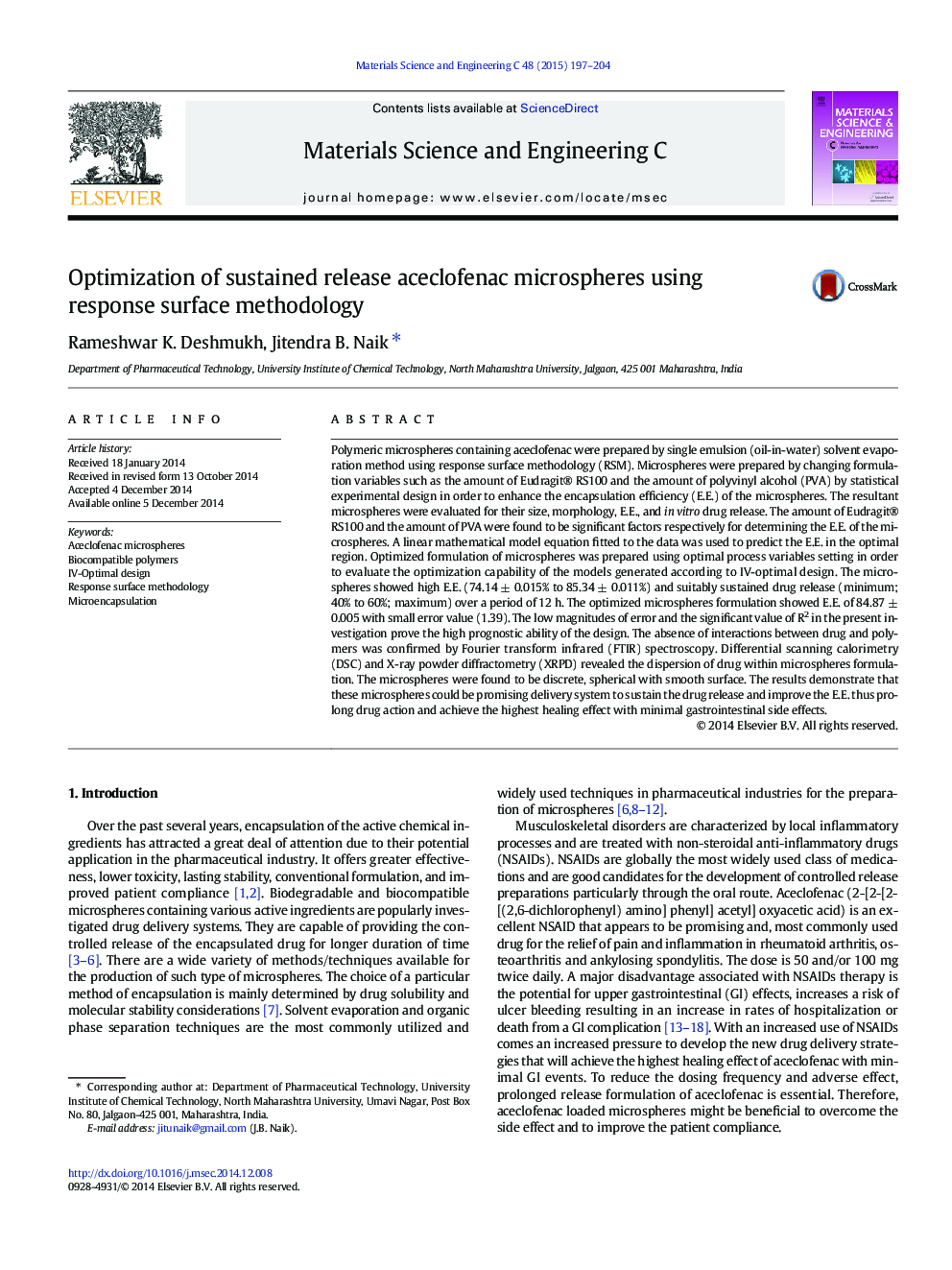| کد مقاله | کد نشریه | سال انتشار | مقاله انگلیسی | نسخه تمام متن |
|---|---|---|---|---|
| 1428448 | 1509173 | 2015 | 8 صفحه PDF | دانلود رایگان |

• Aceclofenac microspheres were prepared by the o/w solvent evaporation method.
• Two independent variables were investigated by IV-optimal design.
• The microspheres showed high % encapsulation efficiency (74.14% to 85.34%).
• In-vitro study of the microspheres showed a sustained drug release pattern.
• Response surface methodology is an efficient tool in the optimization experiments.
Polymeric microspheres containing aceclofenac were prepared by single emulsion (oil-in-water) solvent evaporation method using response surface methodology (RSM). Microspheres were prepared by changing formulation variables such as the amount of Eudragit® RS100 and the amount of polyvinyl alcohol (PVA) by statistical experimental design in order to enhance the encapsulation efficiency (E.E.) of the microspheres. The resultant microspheres were evaluated for their size, morphology, E.E., and in vitro drug release. The amount of Eudragit® RS100 and the amount of PVA were found to be significant factors respectively for determining the E.E. of the microspheres. A linear mathematical model equation fitted to the data was used to predict the E.E. in the optimal region. Optimized formulation of microspheres was prepared using optimal process variables setting in order to evaluate the optimization capability of the models generated according to IV-optimal design. The microspheres showed high E.E. (74.14 ± 0.015% to 85.34 ± 0.011%) and suitably sustained drug release (minimum; 40% to 60%; maximum) over a period of 12 h. The optimized microspheres formulation showed E.E. of 84.87 ± 0.005 with small error value (1.39). The low magnitudes of error and the significant value of R2 in the present investigation prove the high prognostic ability of the design. The absence of interactions between drug and polymers was confirmed by Fourier transform infrared (FTIR) spectroscopy. Differential scanning calorimetry (DSC) and X-ray powder diffractometry (XRPD) revealed the dispersion of drug within microspheres formulation. The microspheres were found to be discrete, spherical with smooth surface. The results demonstrate that these microspheres could be promising delivery system to sustain the drug release and improve the E.E. thus prolong drug action and achieve the highest healing effect with minimal gastrointestinal side effects.
Figure optionsDownload as PowerPoint slide
Journal: Materials Science and Engineering: C - Volume 48, 1 March 2015, Pages 197–204